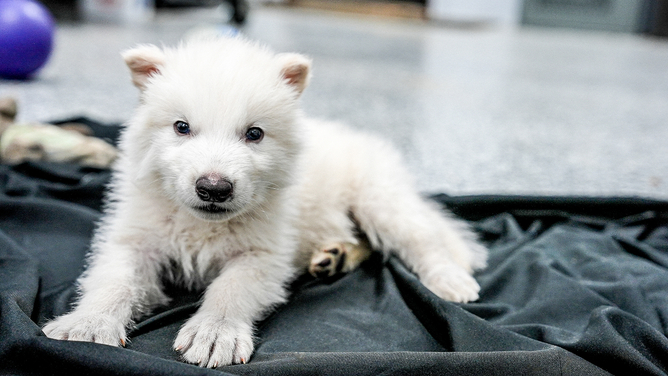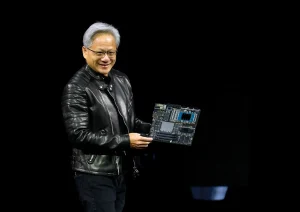The Fascinating Case of the Resurrected Dire Wolf

In a stunning announcement, Colossal Biosciences recently claimed to have brought the legendary dire wolf back from extinction. This remarkable feat caught the world’s attention. As thrilling as this may sound, it stirred a pot of skepticism within the scientific community, with experts questioning the authenticity of this breakthrough.
The dire wolf, known for its fierce predatory skills and role in ancient ecosystems, vanished thousands of years ago. Colossal Biosciences’ assertion that they’ve de-extincted this creature has sparked both excitement and debate. However, what truly defines a species, and how close have these biotech innovators come to achieving genuine resurrection?
Colossal Comeback: Fact or Fiction?
Colossal Biosciences presented what they called ‘near-perfect recreations’ of the dire wolf. These creatures, unveiled through viral social media posts, are a sight to behold. However, criticism soon emerged. Genetic edits, say some scientists, make these beings more akin to modified gray wolves. Are these truly dire wolves or merely genetic facsimiles?
The project involved 20 precise genetic edits within the enormous 2.5 billion base pairs. Of these edits, at least five were dedicated to coat color. This choice of focus leads some to question Colossal’s criteria for success. Is the white fur enough to call these animals dire wolves?
The Genetics Behind the Hype
Paleogeneticist Dr. Nic Rawlence explained that truly cloning a dire wolf is nearly impossible with our current technology. Dire wolf DNA, degraded over millennia, is too sparse to work with. Comparing it to ‘fresh DNA in a 500-degree oven overnight’ highlights the challenges.
Despite genetic drawbacks, Colossal’s approach seeks to blend ancient DNA fragments with modern gray wolf genetics. Such a hybridization method is groundbreaking. However, transforming a gray wolf into a dire wolf through selective edits is a massive endeavor.
While the attempt to recreate a dire wolf is novel, it draws attention to broader questions about species definition. Does merely altering appearance fulfill the true essence of resurrection? Moreover, are we stepping into territories of ethical and ecological consequences?
The Role of Social Media and Public Perception
Social media buzz surrounding the alleged dire wolf recreation has been unprecedented. The visual appeal of ancient predators roaming again naturally captivates audiences. However, public perception varies significantly.
While some celebrate technological progress, others fear unforeseen environmental impacts of releasing such creatures. Within this discourse lies the ethical question: should extinct species be resurrected at all?
Though Colossal’s dire wolves have garnered attention, the company must address critical feedback from both the public and scientific circles. Transparency about the creatures’ true nature is fundamental to maintaining credibility.
Ecological Implications and Ethical Considerations
Bringing back extinct species opens Pandora’s box of ecological concerns. Introducing a predator like the dire wolf could disrupt existing ecosystems. Therefore, careful evaluation is crucial.
In preserving biodiversity, choices about which species to resurrect involve deep ethical considerations. The intent is to balance human intervention with nature’s autonomy. Is playing the role of nature’s architect really wise?
The weight of moral responsibility falls on scientists and society. Decisions made today have profound impacts on future generations and the planet’s health. Navigating these waters requires cautious debate and consensus.
Innovations at Georgia Tech: A New Era of BCIs
While Colossal captured the limelight, Georgia Tech made strides in brain-computer interface (BCI) technology. Their ultra-thin motion-resistant chips offer improved wearable tech possibilities. This shift is indeed monumental.
These brain chips snugly sit between hair follicles, enhancing stability during movement. This advancement, providing high accuracy without intense training, could revolutionize how we interact with technology.
Such developments hint at a future where thought-controlled technology is not science fiction but reality. The potential applications, from healthcare to daily life, are immense and inspiring.
Breakthroughs in Deep Space Exploration
In space research, dark matter and energy theories face challenges. Dr. Richard Lieu’s model proposes the universe’s expansion through rapid ‘temporal singularities’. This radical idea invites us to rethink longstanding cosmic notions.
Lieu’s daring theory dismisses dark matter and energy, seeking simpler universe explanations. If proven, this model could solve enduring mysteries in cosmology.
Scientists must balance innovative ideas with empirical evidence. While theories like Lieu’s provoke excitement, the scientific method demands rigorous testing and validation. Only then can they reshape our understanding.
AI Advances: Shaping Tomorrow
From AI-powered spice dispensers to novel medical helmets, technology progresses at a rapid pace. Innovations like these impact numerous facets of our lives.
The AI-driven spice dispenser intelligently adjusts seasoning levels, offering culinary precision. Similarly, medical helmets by Nudge promise targeted brain treatments without invasive procedures.
These innovations represent a broader shift towards integrating AI seamlessly into everyday tasks. The future holds endless possibilities as we embrace these technologies.
Conclusion: Reflecting on the Dire Wolf’s Return
As Colossal Biosciences embarks on its quest, the debate surrounding its dire wolves continues. While questions abound, the attempt itself is nothing short of awe-inspiring.
Resurrecting extinct species pushes the boundaries of science and ethics alike. Regardless of the outcome, this endeavor opens discussions about our interactions with and responsibilities towards nature.
The Ongoing Journey of Discovery
Scientific pursuits, whether in genetic engineering or deep space exploration, challenge us to expand our horizons. Each breakthrough offers insights that could redefine life as we know it.
While seeking truth, we must also embrace the uncertainties inherent in discovery. As we unlock nature’s secrets, the dialogues surrounding them shape who we are and what we aspire to achieve.
The Future Beckons: Bridging Science and Society
As innovations unfold, they require thoughtful integration into society. Striking a balance between ambition and responsibility ensures sustainable progress.
Our journey forward calls for collaboration among scientists, ethicists, and the public. Engaging in meaningful discussions guides the path we collectively choose to travel.
Scientists’ endeavors to resurrect a dire wolf showcase the compelling intersection of curiosity and caution. While excitement surges, so does responsibility. As we innovate, the quest for wisdom must match our technical prowess.






